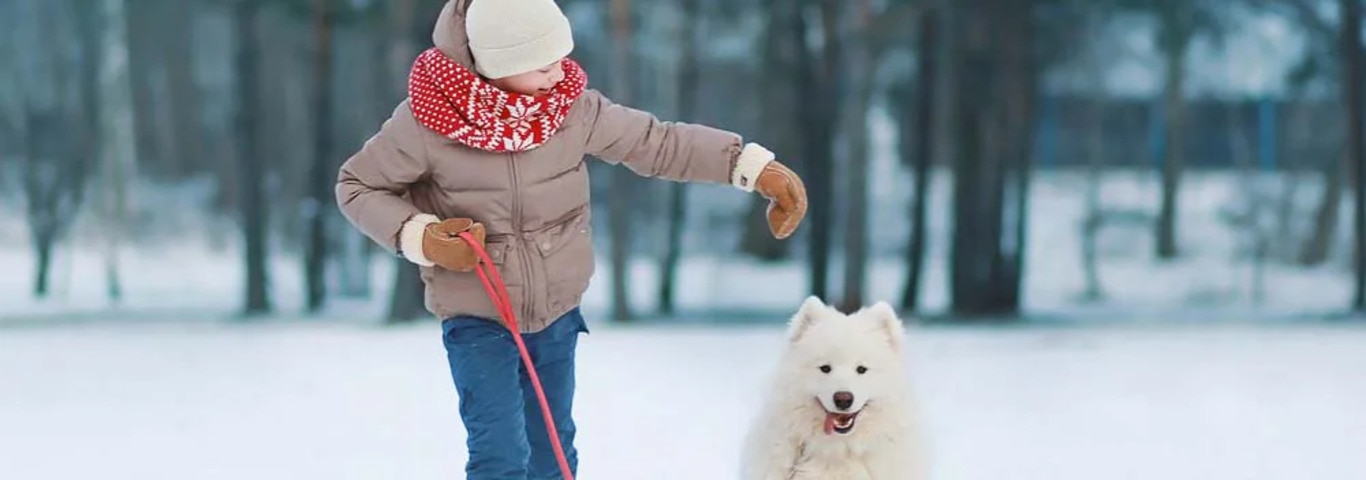Samoyeds are squarely built, sturdy dogs, with a fluffy plumed tail curled over the back and draped to one side.
The ears are prick and the head is broad. The corners of the lips curl up to give the characteristic "Sammie smile." Samoyeds should have nice dark pigment around the eyes, nose, and lips despite the white coat color.
The sparkling white coat is the glory of the Samoyed breed. As would be expected for a breed of northern origin, this is a thick, harsh, straight coat with a very full undercoat. The color is a striking white though biscuit or cream coloration is allowed. The coat stands out from the body giving a fluffy appearance to the Samoyed.
The Samoyed is a friendly, personable dog. These are intelligent dogs, with a touch of independence. Bred to live in a tent in very close quarters with their families, they thrive on human company. Samoyeds will alarm bark and, if left alone for long periods of time, will often develop into nuisance barkers. Digging can be a problem because they dig to reach a cool resting place.
Samoyeds tend to get along well with other dogs as well as people and with other pets they are raised with. They are herding dogs and may show some tendency to chase or nip. In general, they get along well with children, although they can be a little boisterous for small toddlers.
Samoyeds are another of the truly easy-to-keep breeds, thriving on fairly small amounts of top quality food. Too many treats or not enough exercise can easily lead to obesity. Samoyeds tend to be hardy, long-lived dogs, often reaching 12 or 14 years of age.
These are active dogs and need daily exercise. Since Samoyeds are so attuned to people, they enjoy training and will happily compete in obedience, agility, herding, sledding, and weight pulls. They do not do well if left alone for long periods of time. Samoyeds usually alarm bark but then greet the stranger with a wagging tail and tongue. The characteristic "Sammie smile" with the curved lips is not in any way an expression of aggression.
Samoyeds can be a bit independent and do best with early training and socialization with a firm but gentle hand. They are happiest when given chores to do, even if just pulling a cart in a parade. Grooming must be done daily or nearly so, especially during shedding time.
The Samoyed is truly an ancient breed, selected by nomadic tribes in Siberia to herd their reindeer and double as sled pullers when needed. Originally, these all-purpose dogs were of a variety of colors, but the sparkling white has since taken over in most areas of the world. The Soviet Nenet Herding Laika may be the true ancestor of the Samoyed we know.
These are hardy, friendly dogs and early European explorers quickly realized their value. Samoyeds came to England in the late 1800s, sometimes as gifts from the Czar of Russia. Queen Alexandra is known to have favored them. Samoyeds then joined many polar expeditions, notably "Etah" who led Roald Amundsen's first trip to the South Pole.
Many Samoyeds still work today, herding reindeer and pulling sleds as well as being family companions in much of the world.
Adopt a pet. Change a life.
Are you prepared to adopt a pet? Use these tools to make sure you are ready for the commitment.
Adopt a pet. Change a life.
Are you prepared to adopt a pet? Use these tools to make sure you are ready for the commitment.






















